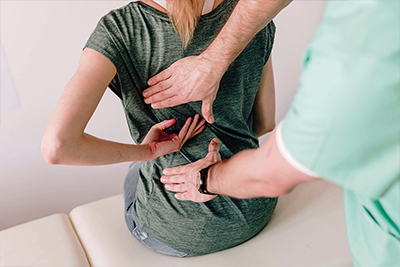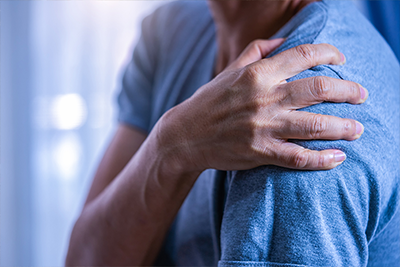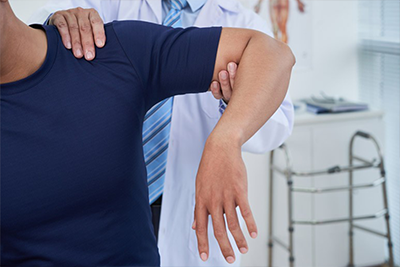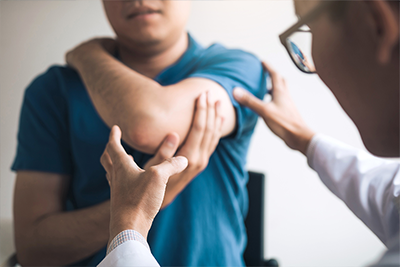One of the most common beliefs is infants have enough flexibility to eliminate any musculoskeletal imbalances throughout their bodies. In many instances, this is simply not true. The only way to be certain is with a professional analysis of the infant or child’s birth history along with an examination and clinical observation. For nearly every condition there is an underlying cause contributing to the physiological or physical condition of the child. Osteopathy is a way of finding these issues to manually help the body to adjust. Paediatric Osteopathy helps babies and children with:
- Crying, irritability and screaming
- Pains, aches and headaches
- Vomiting and sickness
- Ear infections
- Asthma
- Mouth breathers and sinus issues
- Infections
- Difficulties with feeding
- Tech-neck in young adults and children
- ADHD
- Posture issues
- Sleep disturbances sometimes caused by teething
- Colic and wind
- Prematurity
- Hamstring calf strain
- Chronic infections and fever
- Learning issues and behavioural difficulties
The Delivery of the Baby
A newborn check provides an opportunity for the baby to be examined by an osteopath. An extremely gentle cranial check will also be performed. When the stain resulting from pregnancy and birth are resolved early, the chances of the baby becoming irritable, unsettled or quarrelsome later on are decreased. In some cases, only one treatment is necessary to accomplish this and additional treatments are not recommended. If additional treatments will offer more benefits for your baby, you will be informed. You can decide if you want your baby or child to have another treatment. When an osteopath diagnoses your baby earlier, restoring the balance within your baby is much easier.
There are 23 different bones in the skull. The bones in an adult’s skull are joined in a specific way to enable even the slightest movement to result in a fluid motion both around and within the brain. The skull of a baby is very different from that of an adult. The amniotic sac in a baby is often referred to as the membrane or the bag of waters. This is where the development of the membrane surrounding the fetus occurs. The membranes are transparent, tough and thin. The bones located on top of the baby’s head enable the shape of the head to change while protecting the brain as the baby enters the birth canal. The bottom of the head or the cranial base is strong because it must be able to survive the compression occurring during birth. This is what protects the vulnerable areas of the baby’s brain.
Giving birth to a child is both wonderful and extremely stressful. The baby must sustain an enormous force as the baby’s mother pushes the baby out. The birth canal is naturally resistant to this event. The baby is twisted and turned as it is squeezed through the pelvis. This journey is generally short but it is stressful for both the mother and the baby. As the baby begins to descend, the cranial vault or the top of the baby’s head overlap one another. This reduces the actual size of the head as the baby begins to descend. To further decrease the size of the head, the chin of the baby is tucked into the chest. If the delivery is delayed, the majority of the strain is placed on the back of the baby’s head.
The back of the baby’s head and the membranes surrounding the spinal cord and the brain are able to absorb all of this stress during the delivery. This results in numerous infants being born with a head that has an odd shape. During the first few days, the baby yawns, cries and suckles. As time passes, there is a gradual loss of the moulded shape of the head. In many instances, the process of unmoulding the head remains incomplete. This is especially true when a difficult birth has occurred. There are a lot of reasons why labour is often difficult for both the baby and the mother. Sometimes the position of the baby requires the use of manual traction or a forceps for delivery. This causes an additional strain which is difficult for the body to resolve.
Unfortunately, many babies are forced to live with numerous uncomfortable stresses in their heads and bodies. The baby may eventually become unsettled and unhappy later on due to the physical discomfort. There are babies who cope with a difficult birth extremely well and are happy and content. It is extremely important to diagnose and treat any issues resulting from a difficult birth. The body of some babies will become strained during birth. This strain must be resolved to prevent the growth of the body from becoming unbalanced. When this happens, the structures throughout the body must find a way to compensate for the distortion. This will result in symptoms and signs that may become apparent right after birth or they may not show for a long period of time.
Cranial Osteopathy
The anatomy of the skull is extremely complex. This is the reason so much post-graduate training is required for an Osteopath. An osteopathic medical degree is necessary to perform this procedure correctly. The cranial osteopathic technique is taught during basic training for a medical degree. It is important to understand some Osteopaths have specialised in paediatric osteopathy at a post-graduate level. This means the osteopath fully understands the procedure, has experience using the necessary techniques and will be exceptionally gentle with the baby or child. These osteopathic techniques were embraced by (CST) Cranio-Sacral therapy during the 1970s. CST is a hands-on and gentle approach to release tension deep within the body. This will relieve dysfunction and pain while improving the performance and health of the entire body.
When the Cranio-Sacral therapists is also an Osteopath, they have a background in physiology, biomechanics, anatomy, diagnosis and pathology. This means they are able to provide a valid diagnosis. This is imperative prior to proceeding with the recommended treatment or application. Numerous individuals believe cranial osteopathy only treats the head due to the name of the procedure. Cranial osteopathy is actually an extremely gentle and subtle technique used for the treatment of the entire body. This procedure examines the complicated structure of the baby’s head in great detail. This includes the influence of the brain on the health of the entire body due to the connection to the spine. The reason cranial osteopathy is so important is the force placed on the head of the baby from the contractions of the uterus.
Although these contractions are necessary for the baby to be born and a natural process, a disturbance can occur resulting in the development of certain conditions. In most instances, these are compression’s in the body and skull of the baby. These compression’s may remain after the baby has been born. Not every baby will recover naturally from these compression’s. Sometimes, a skilled practitioner is required to encourage the natural process of healing. The impact of the compression and the moulding of the skull is different for each baby.
Conditions that May Occur in Infants
There are different conditions that can affect the baby. The most common conditions are defined below.
Colic and Wind: This occurs when the baby over regurgitates milk between feedings or after being fed. Increased periods of crying usually occur during the evening.
Difficulty with Feeding: This happens when the baby does not sufficiently latch onto the mother’s breast. The time-consuming nature of this issue can eventually cause the feedings to merge together.
Irritability and Crying: In some instances, the baby needs to be held or carried almost constantly. The baby will cry or become irritable if left alone in a crib for too long.
Disturbances in Sleep: This is when the baby wakes up very easily and only sleeps during a short period of time during the night and the day.
Compression of the body or head may also have a negative effect on the child as they begin to grow. This includes the issues defined below.
Exaggerated Growing Pains: This issue often leads to extreme difficulties. This can impact the general performance and sporting activities of the child. If this issue is not handled properly early on, the result may be the child living a sedentary lifestyle as opposed to participating in the activities usually embraced by children.
Persistent Mouth Breathing: This issue can result in chronic infections. The child may also develop dental issues including overcrowded teeth.
Recurring Infections: This is most common for the throat and ears of the child.
Behavioural Issues: This involves constant fidgeting and poor levels of concentration.
Osteopathic Treatment
Cranial osteopathic treatments are extremely useful for all of the conditions listed above. This treatment uses an extremely gentle approach. The focus is placed on disturbances around the pelvis and the skull. This is what encourages the changes throughout the rest of the body. The stresses in the body can then be decreased. Although the majority of babies and children enjoy the treatment, every child will have a slightly different reaction. In many instances, the feeling of total relaxation causes the infant to fall asleep. An infant becoming unsettled during the treatment is rare. This type of situation is temporary, usually resulting from the incomplete release of the retained moulding.
Sometimes, it is not possible to release all of the compression during just one treatment. This is especially true if the baby has severe symptoms. The average number of treatments necessary is between four and six. The actual number is dependent on the severity of the issue. If the condition is severe but the baby responds well, less than six treatments may be recommended. Most infants will respond to the subtle inputs fairly quickly. The age of the infant and the severity of the issue must be taken into consideration. This treatment is appropriate once the baby has been born.
Paediatric Osteopathy
The basis of paediatric osteopathy is all ailments from minor to serious were the result of an imbalance. This imbalance can be anywhere in the network of the body. The Osteopath will obtain the full medical history of the infant or child and conduct an examination prior to making a diagnosis. The manual techniques used are both subtle and refined. This is what triggers the profound changes in the body of the child through gentle manipulation. This will enable the gastrointestinal tract, the immune system, the musculoskeletal system, the circulatory system and the nervous system to work together both optimally and effectively. The treatment is non-invasive and does not require the use of any drugs.
A good example is a child who has received a diagnosis of a chest infection. The surrounding anatomy is an important part of the respiratory function. When the respiration becomes altered in any way, it can become a contributing factor for decreased clearance and tissue congestion. The other contributors may include an alteration in the lymphatic circulatory system, an increase in the expenditure of energy and altered ventilation. When the Osteopath corrects the misaligned motion of the joints and decreases the tension in the connective tissues of the face, the underlying anatomy can once again function normally.
Experience and skill are incredibly important due to all of the changes occurring in the head of the infant during their first six months of life. The anatomy of the infant will change gradually to accommodate the development and growth of the body and brain until the infant reaches their early adult years. The symptoms of an irritable and crying baby indicating treatment is necessary are defined below.
Symptoms
Digestive Issues Including Regurgitating Milk: Excessive crying often results from painful and trapped wind. This is generally worse during the evening. The baby may become rigid or curl up. The infant will move their legs and arms constantly.
The Preference to be Carried in an Upright Position: The digestion of the baby can be affected by an irritation of the diaphragm and stomach as they exit the skull. When the baby is breathing, their gut is massaged by the diaphragm. If the movement of the nerve is affected or if the nerve becomes tight, there can be an impairment in the movement through the bowel and the stomach. This can cause irritability and pain.
The Baby Who Needs to be Rocked to go to Sleep: This baby is probably sucking for comfort and wants to be carried. This is because the infant is uncomfortable due to the pressure they feel in their head from the retained moulding. This is the reason they must be constantly rocked or moved to be able to settle down and go to sleep.
Difficulty Feeding the Baby: The baby may require a long period of time to feed, make clicking sounds during feeding, be a fidgety feeder and one feeding may eventually merge into the next one. If the mother is breastfeeding, her nipples may be sore. The reason feeding is tiring and difficult is because of the stresses located throughout the baby’s throat, face and head. There may be irritation in the nerves of the tongue as they exit from the skull. This makes it difficult for the baby to suck.
Issues with the Sinuses and Ears: The symptoms there is an issue include mouth breathers, a runny or blocked nose, facial congestion, impaired hearing and a delay in the development of speech. The movement of the bones surrounding the face may be affected by the retained moulding. This decreases the drainage of both the sinuses and the ear canal.
The Inability to Relax: The symptoms of this issue include a baby who takes catnaps, only sleeps for short periods of time and is a very light sleeper. This can be caused by tensions on the membranes. This causes the skull to keep the nervous system of the baby in a consistently alert state. As the child grows, retained moulding can cause numerous issues for the child. Children may start biting others, toys or themselves or banging their heads. This issue can deplete the immune system and the reserves of the body. The child will be at a higher risk for infections.
The Aches and Pains of Childhood: The aches and pains generally start by the time the child is seven or eight. The child will be more vulnerable to sprains and experience growing pains. This happens because the child feels pressure in their skull due to the retained moulding. The bony joints will form by the age of seven or eight. The body is then left vulnerable to fatigue and strain due to postural tensions throughout the body.
Related Resources:
- Introduction to Cranial Osteopathy
- Osteopathy During Pregnancy
- Osteopathy FAQs
- How to Manage Back Pain During Pregnancy!
- What Does Cranial Osteopathy Do for Babies?




























